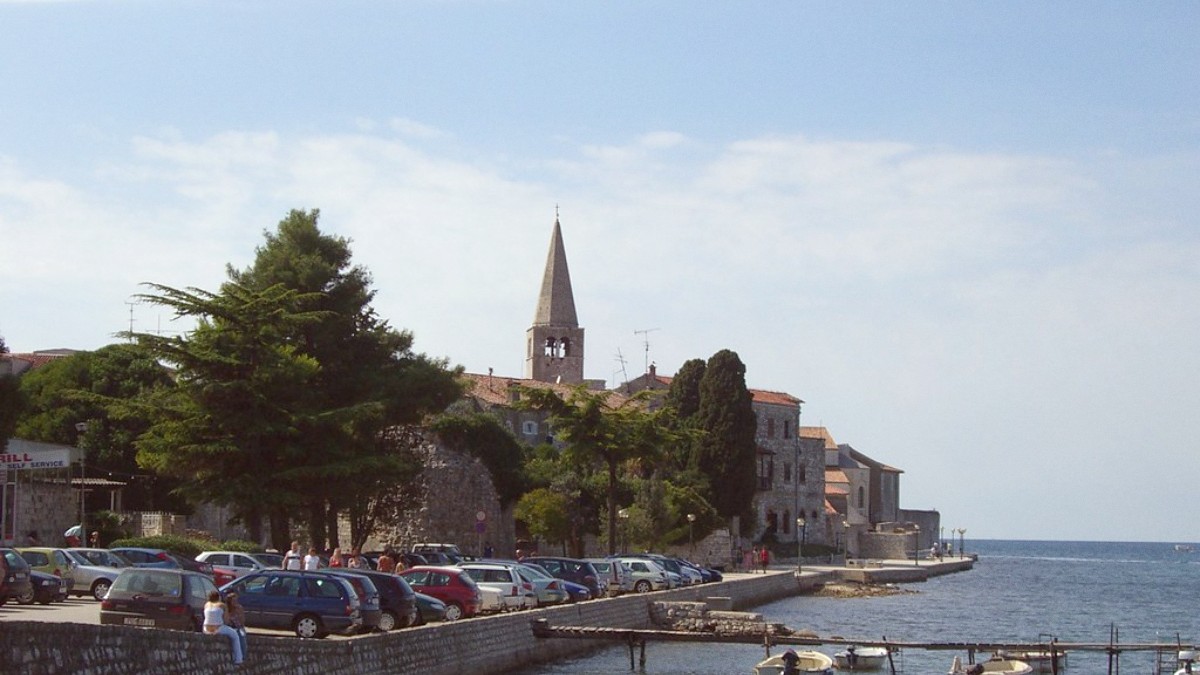
Istria, Croatia
Every corner in this town tells a story, from its grand Byzantine basilica to its lively waterfront. A journey to a place where history feels alive; new discoveries await each moment.
Poreč, known as Parenzo in Italian, sits gracefully on the western coast of the Istrian Peninsula within Istria County, Croatia. This strategic position places it directly on the Adriatic Sea, with a long history as a significant maritime hub.
The town's historical core occupies a small peninsula, naturally protected from sea winds and waves by the nearby island of Sveti Nikola, or Saint Nicholas. This island has an additional layer of natural defense and a peaceful escape for visitors.
Poreč carries a layered history spanning over two millennia; it is a living museum. Its story began in the 2nd century BC as a humble Roman military camp, a castrum, positioned strategically on the Adriatic. This camp quickly grew into a thriving Roman colony, Colonia Iulia Parentium, a testament to the Roman Empire’s expansion and organization. The grid-like street plan of the Old Town, with its main streets Decumanus and Cardo Maximus, still follows the original Roman layout.
The Byzantine period saw the creation of the town’s most celebrated monument, the Euphrasian Basilica. Its shimmering gold mosaics, intricate marble work, and well-preserved complex take visitors back to a time of profound religious and artistic expression. Venetian rule lasted for over five centuries, molding Poreč into a significant port and administrative center within its vast maritime empire. The Lion of St. Mark, a symbol of Venice, is visible on old stone buildings, a reminder of this powerful era.
Roman military camp established (Castrum)
Euphrasian Basilica built during Byzantine rule
Venetian Republic governance
Under Austrian, Italian, and Yugoslavian rule
Part of independent Croatia
Walking these streets, you can almost hear the echoes of Roman life, from bustling markets to public forums where citizens gathered. Remnants of Roman temples still stand in Marafor Square, a tangible link to this ancient past.
Each historical period left its own imprint, a part of the town's layered cultural identity. This long and varied history; every walk through Poreč's Old Town is a journey through different eras, with Roman foundations beneath Venetian facades and Byzantine mosaics shining within Croatian borders.
The Venetian influence remains deeply etched into the town's architecture. You will see numerous Venetian Gothic palaces with their distinct windows and balconies, lining the narrow streets. During this period, Poreč flourished as a trading hub, linking the fertile Istrian hinterland with Venice and the wider Mediterranean world.
Poreč stands today as one of Croatia's most popular tourist destinations, attracting visitors with its appealing mix of historical depth, natural beauty, and modern resort amenities.
At its heart lies the UNESCO-listed Euphrasian Basilica, a symbol Byzantine artistry that attracts admirers worldwide. Surrounding it, the well-preserved Old Town showcases Roman ruins, Venetian palaces, and narrow, winding streets for exploration.
This historical core sits on a peninsula, with stunning sea views at nearly every turn. The coastline around Poreč is dotted with numerous beaches and modern resorts, ranging from family-friendly hotels with extensive facilities to quieter coves for relaxation.
The clear, clean waters of the Adriatic Sea welcome swimming, snorkeling, and a variety of water sports.
The island directly opposite the town adds to its coastal charm, with an easily accessible natural escape.
Poreč's local economy relies heavily on tourism, agriculture, and fishing.
The fertile Istrian hinterland surrounding Poreč is famous for its olive oil and wine production. Istrian olive oil consistently earns international awards for its high quality and distinctive flavor.